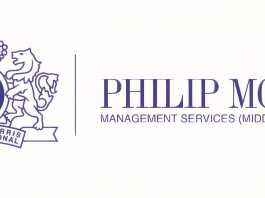Since the beginning of 2013, appetite for yield has dominated financial market performance. Presently, at the beginning of Q2, markets are entering a period of transition as there is an uncertainty about the markets’ further performance. It is very much likely the monetary-based worldwide economic recovery to continue into 2Q of 2013. Though, in the second half of 2013 the sluggish global economy will trigger fresh worries among market players. Therefore, the massive rotation from bonds to stocks may not actually materialize. In respect, equity investors are very much likely to focus further on high-dividend stocks. Such are the healthcare, consumer-driven and insurance-based stocks. Most probably, defensive currencies demand would also increase. The Swiss franc and Japanese yen are likely to appreciate once risk appetite in financial markets eases.
Analysts believe that growth will continue its upward pace in the 2Q of the year. The US real estate revival still brings yield to the largest economy. This leads to an increased household wealth and consumption growth. Top growth contributors for the first half of 2013 are consumption and investments.
At present, China also benefits from the pick-up stimulus brought by its new government. Yet, crucial reforms are needed in order to shift the present Chinese model. The country has more to do to change from an export-driven to a consumer-led economy.
Even on a slower pace, the Euro Zone is also reviving. The growing projections for a strong long-term upswing are too optimistic. Euro-based fiscal consolidation policies will hamper the global economic growth along the year. In the US, the so-called “sequestration” will eventually slow down the growth. This development will very much likely spread to the European continent. The Eurozone-related concerns are expected to re-appear in the second half of 2013. That’s because none of the EU countries can record debt level reduction without growth.
In such scenario, the major economic indicators are expected to peak in the coming months. Once again, the defensive currencies such as Swiss francs and Japanese yens will be in demand. The US dollar is in a negative correlation with the stock markets. Therefore, growth concerns are likely to benefit the greenback. On the contrary, the euro could go to the risk of currency losses. That is due the weaker economy could spark the debt crisis once again.
Asian emerging market currencies are projected to thrive in the long term. That is in respect of the robust fundamental data of the Asian countries.
Bond markets will very much likely face a big turnaround in the secong half of 2013. During the Q1, a cluster of positive drivers led to a rise in US yields. US consumers are likely to feel the hamstring of the adopted fiscal measures during the second half of 2013. The 2Q is believed to be a phase of transition. Forecasts point at a yields rise at the beginning. After that by the end of the quarter a bond market turnaround is expected. The Euro Zone won’t be able to avoid the US economy slowdown in the second half of 2013. This will lead to a drop in German yields at the end of the year. Swiss interest rates also have a chance to trend lower again due to the worsening economic backdrop. In contrary the emerging markets will remain appealing in no respect of the 1Q disappointments.
The global equity markets somehow recorded big gains in the 1Q 2013 despite the reignited euro concerns. So many are wondering if the long-awaited “great rotation” will occur and if the next bull market is really near. For now the equity markets are expected to stay on an uptrend. That is due to the low interest rate, attendant high risk premiums in the recovering economic environment. However when the fiscal policy setback turns prevailing, the disappointments will come. The stock markets are projected to follow the same seasonal pattern as they did in the last three years. Therefore the high-growth dividend-paying stocks trend should pass on. Such stocks are largely the consumer staples, healthcare and insurance sectors. The low interest rate environment has been adopted by real estate stocks which have the lowest upside scope. Emerging market equities would offer the greatest potential despite the tepid performance during the 1Q. Therefore the Chinese news flow would have crucial role.












